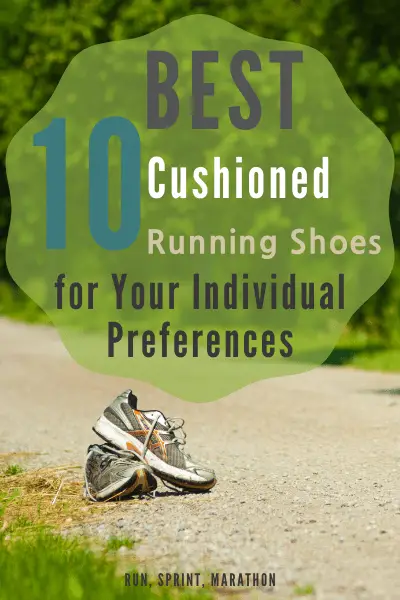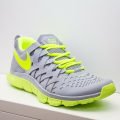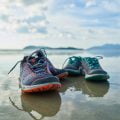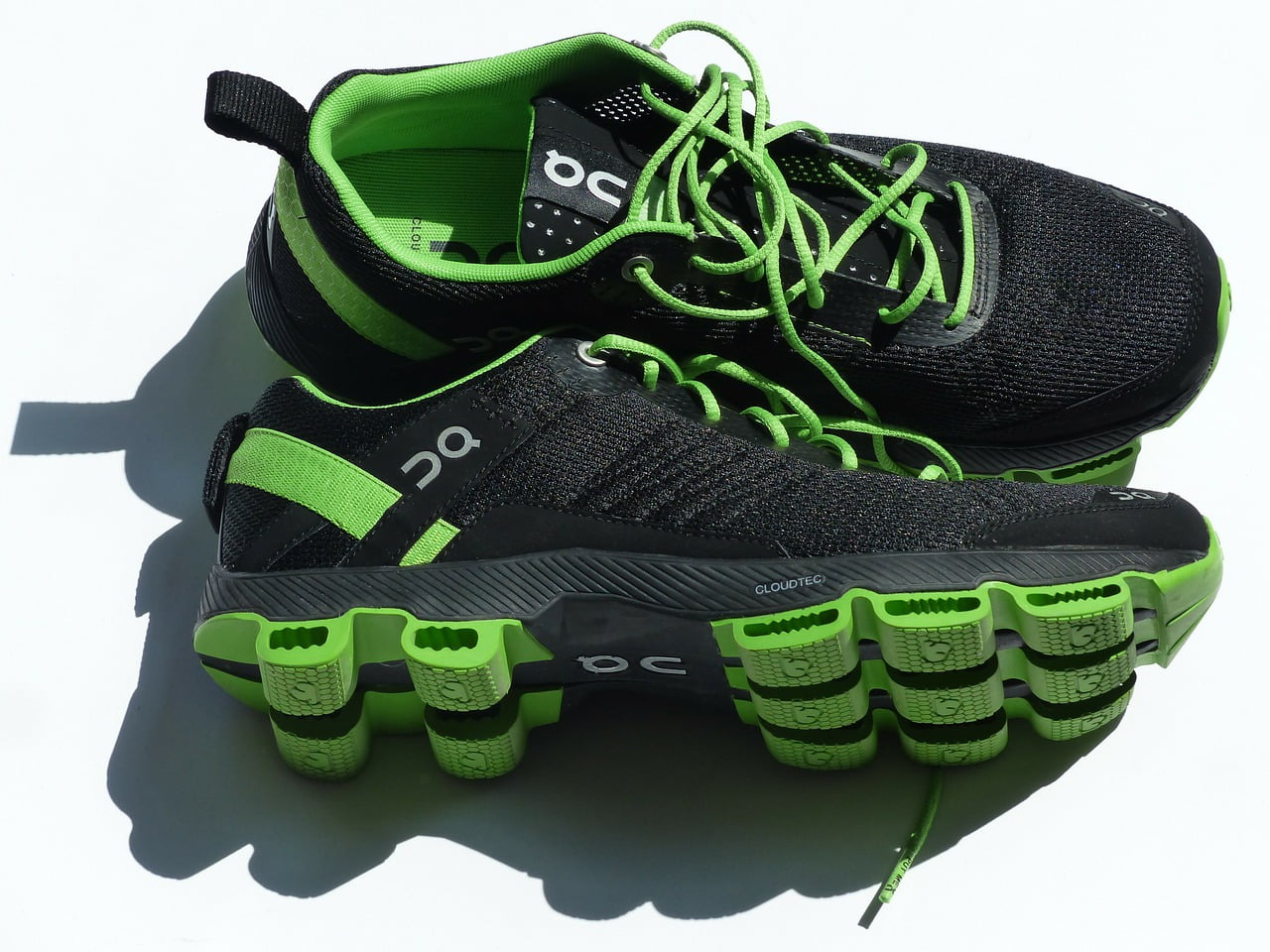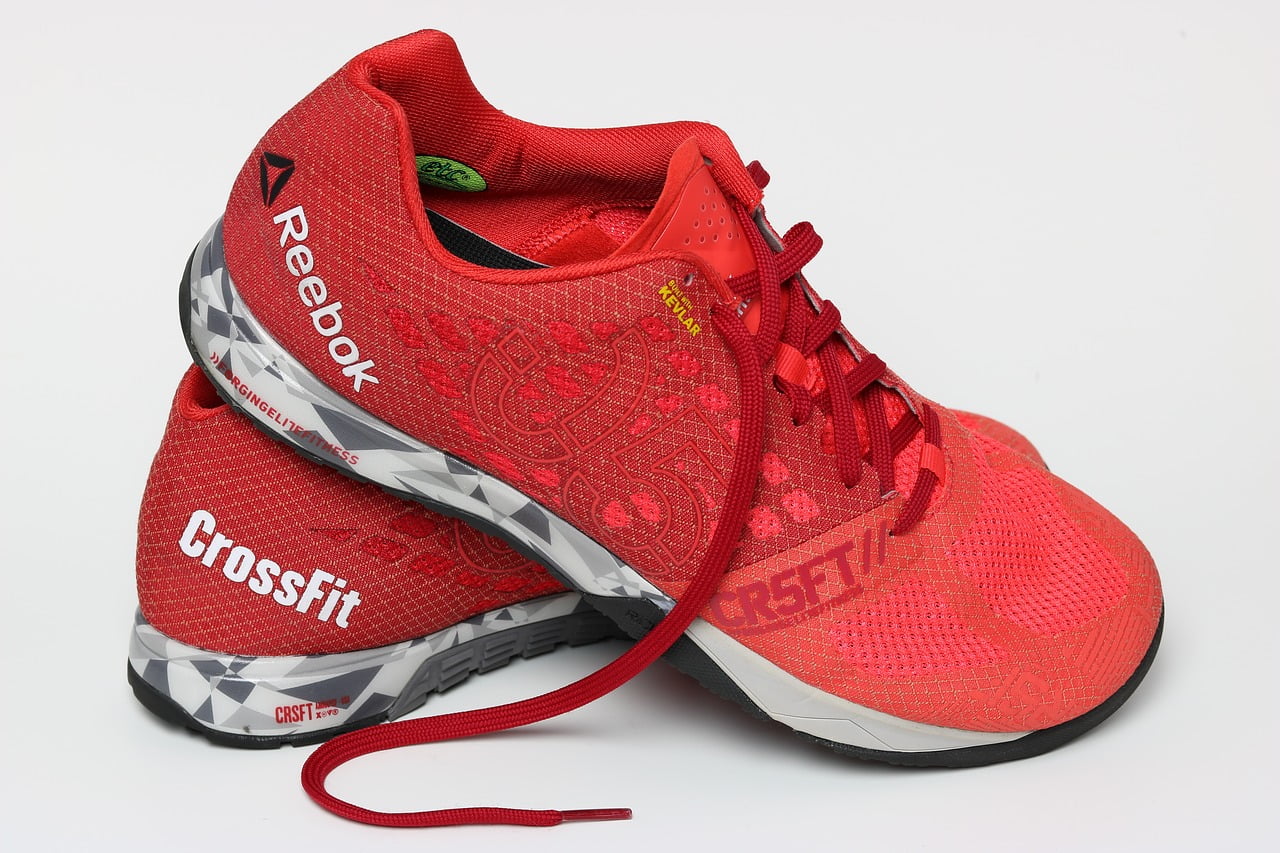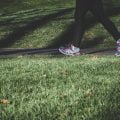One of the greatest things about running is that, of all the sports you can pick up as a hobby, it requires almost no specialized equipment. There is one thing, however that is absolutely required to perform your best and remain injury free. That is: good shoes.
With all the products on the market, it can be very overwhelming to pick the right shoe for you. There are endless options for style, color, shape, level of cushion, the list goes on and on. For most people, from beginners to seasoned runners, choosing between the various models of shoes is a huge task.
That is why I have created a list of Best Cushioned Running Shoes. After researching in stores and online and spending miles and miles testing different shoes as well as hours reading reviews, I have compiled a comprehensive list of the top 10 cushioned shoes you can buy right now. Note that if you are advanced enough to prefer a minimalist (aka barefoot) running shoe, you will want to take a look at this article about Barefoot Running Shoes.
Cushioned Running Shoes #1:Adidas Supernova Sequence 9: Best for Stability
Adidas pitches this shoe as stable and supportive, made of breathable mesh for all-weather running. The polyurethane based Boost foam provides soft cushioning, exceptional durability and resistance to inclement weather.
The Sequence 9 is one of the firmest shoes in the Boost line made by Adidas, mostly due to the use of “Stableframe” technology overlaid in a separate layer over the Boost foam. This system supports the foot on the inside and reduce medial foot roll. That makes this shoe the top of the line and most popular for road running.
Reviewers gave this shoe a 90% consistently across the board. Most were very happy about how light the shoe felt despite being bulkier than a lot of the competition. The biggest downsides were the price tag and bulkiness. This shoe is best for moderate overpronators and people who need extra room in the toe box.
Pros: durable, comfortable, and breathable with a stable ride and good fit.
Cons: some stiffness, high price tag, may be too bulky for long-distance running
Cushioned Running Shoes #2:Asics 33-M 2: Best for Daily Running
The M in this shoe’s name stands for “maximal”, as in maximal cushioning, and reviewers seem to agree that it lives up to its name. Marketed as a lightweight, highly cushioned shoe for runners with a neutral foot strike, the 33-M is part of the Asics Natural33 collection. This collection is inspired by the 33 joints of the foot and the shoes are designed to work naturally with the foot. Reviewers’ main complaints are the high price tag and bulkiness of the shoe. In all, this one is a solid option for daily running and long distances. This shoe consistently ranks high in reviews at 94%
Pros: seamless and non-irritating, antimicrobial inner lining, great cushioning, midsole feels soft, lots of color choices.
Cons: bulky look, high price point, may absorb moisture
Cushioned Running Shoes #3:Asics DynaFlyte: Best for Speed Work
Asics markets this shoe as the most responsive cushioning system ever. This lightweight model uses FlyteFoam, a product that spent 3 years in development at Asics with the intent of making the runner feel like s/he is flying. Reviewers were especially appreciative of the anti-irritant and antimicrobial sock liner.
As with all Asics shoes, there is an impressive array of color schemes available. This shoe is best for daily road running and runners with a neutral foot strike.
“Springy-ness” is the main reason for its 89% positive reviews, and the company emphasizes bounce-back mechanics of the Flyte Foam to allow for comfortable landing and smooth transition when pushing into each step. The only negative feedback I found was on the price point.
Pros: very comfortable, non-irritating, antimicrobial and anti-moisture lining, lots of color options, low impact landing, lightweight
Cons: expensive
Cushioned Running Shoes #4:Brooks Ghost 9: Tried and True
The Brooks Ghost line is one of the biggest names in running shoes for good reason: comfort and versatility. Reviewers rave about this shoe requiring minimal break-in and providing excellent arch support.
The shoe does feel very good out of the box and is surprisingly light for quite a lot of shoe. Because it provides good traction and lateral support, the shoe is also suitable for multiple types of cross-training. This line of shoes has won multiple Best Buy and Editor’s Choice awards from Runner’s world Magazine.
This shoe is rated 95% positively among reviewers, with the comfort and stable price point being among the favorite features. Negative reviews tended to focus on the unusual color combinations, which is par for the course from Brooks and the lack of room in the toe box.
One reviewer mentioned problems with the laces coming undone during their run, but issues like that are easily remedied by double-knotting or buying new laces
Pros: very comfortable, good price, lightweight, excellent traction, good arch support. suitable for cross training.
Cons: high heel to toe drop (12mm difference), unusual color combinations, snug toe box, issues with laces
Cushioned Running Shoes #5:Brooks Ravenna 8: For the Unsure or Confused
The Ravenna line from Brooks is just as popular, though arguably not as consistent as the Ghost line. It provides excellent cushioning and some stability that allows for a very smooth transition. It is light weight with enough firmness to give that famous Brooks feeling of springiness.
This shoe is rated at around 90% though reviewers seem to be torn about whether this is a neutral shoe or a stability shoe. There are also mixed reviews with regard to whether the shoe is too snug or too loose. As usual with Brooks, most of the negative feedback comes from the lack of color options and the laces as described above.
One reviewer did have trouble with the heel slipping in one foot. In general, this shoe is solid for its price and will work best for runners that are ambivalent in their preference of snug vs loose and stability vs neutral strike.
Pros: soft, lightweight and not bulky, very responsive, good price, “springy” feeling
Cons: very few color options, heel slippage, laces come loose
Cushioned Running Shoes #6:Hoka One One Speed Instinct: Best Traction
Truly an innovator in their field, you may have never heard of Hoka One One before. The company’s main claim to fame is bucking the minimalist trend.
With midsoles, twice the thickness of other running shoes, the shoes from this brand sure look bulky and awkward, but reviewers agree that, despite the clunky look, the shoes made them feel light and sure-footed with optimal cushioning for long distance racing.
The shoes have been historically most popular among ultramarathoners and those who are committed to getting the most mileage out of their shoes. This shoe has about an 85% positive rating among reviewers, with its bulkiness and firmer forefoot with softer heel highest amongst the complaints about the shoe.
Some reviewers did note that the web material on the upper wore out quickly and the upper itself was not very breathable. This shoe is unique in that it may be suitable for trail running, as some reviewers commented that it has excellent traction on wet terrain.
Pros: comfortable with maximum cushioning and good traction, very responsive and many different color options
Cons: upper seems to be not very breathable and wears out easily, may be too narrow for the preference of some runners
Cushioned Running Shoes #7:Mizuno Wave Inspire 13: Most Comfortable
By far the most common word found in the positive reviews for this shoe was “comfortable”. The cushioning system is responsive and the toe box is optimally roomy without being too large. In comparison to previous models of the Wave Inspire, the 13 felt lighter and more durable.
This is the longest running series of shoes that are still currently available and remains very popular among runners who desire a good stability and performance shoe. The ratings vary from about 78-80% based on the fact that some runners felt the shoe felt hard and inflexible and may take longer than other shoes to break in properly.
Some also expressed concerns about the construction and quality of the shoe. Overall, as an off-day trainer (such as during short runs or hill work) this shoe works as a lower priced option to a moderate support shoe such as the Brooks Ravenna or Saucony Ride
Pros: smooth and sturdy ride, true to size, excellent price
Cons: heavy and large, require a lot of break-in, narrow toe box, less durable than the competition
Cushioned Running Shoes #8:Nike Lunarepic Low Flyknit: Best Looking
Nike markets its Lunarepic line as being the most versatile running shoe available. From running, to cross training to leisure, the shoe can do it all. Reviewers love the look and comfort of the shoe.
The cushioning material developed by Nike known as Lunarlon is designed to provide lightweight cushioning in the midsole. The shoe also features 5 laser-cut grooves across most of the length of the shoe meant to compress and flex upon foot strike. The idea is that the pods in the sole are meant to grip and rebound independently from one another, giving them the ability to move with your unique foot strike pattern.
Most reviewers comment that the Lunarepic is basically a more cushioned version of the Nike Freerun, which is not a bad thing. However, many complained that the ride could be unstable and while they understood the concept of the laser cut outsole and the independent pods, they could feel them moving independently under the foot and made the run feel wobbly.
It is a very attractive shoe, however, and could be useful for running on terrain or for casual wear. This shoe earned a 70% rating, though most of the positive reviews were about the overall look of the upper.
Pros: nice look, unique design and innovative technology, comfortable, flexible and durable
Cons: some found it unstable, high price tag
Cushioned Running Shoes #9:Saucony Cohesion 9: Best Value
Saucony is a brand that is consistently reviewed as being the most comfortable and smooth-transitioning. It is moderately priced and easy to find on sale in addition to the fact that most runners consider it well worth the investment.
Saucony also boasts the most color combinations of almost any brand. The Cohesion 9 ranks among the best shoes of the year with a 91% rating from reviewers. This line has a history of being one of the best value running shoes that provides excellent comfort and durability.
The Cohesion was my first pair of running shoes, though it was many versions ago, it was excellent for a beginning runner just getting to know her running style as I believe it really helped prevent pain and discomfort in my feet and legs. The negative reviews seem to indicate it runs about 1/2 a size smaller than expected
Pros: great price, endless color options, comfortable and durable. Ideal for beginning runners
Cons: may run small
Cushioned Running Shoes #10:Saucony Ride 9 (or 10): My Favorite (Best Overall)
Providing superb traction and consistency in cushioning, a lot of the positive factors of this shoe are echoed from the Cohesion. The main difference is the breathability, durability and lightweight nature of the shoe.
Multiple reviewers commented that it was extremely comfortable right out of the box and can be utilized in all types of distances, speeds and terrains. Rated at an incredible 99%, the only complaint I saw was that the shoe runs a bit small.
This is the favorite for best running shoe of the year according to several experts. The Ride has always been my favorite, and the newest update, the 10th iteration in the series, is set to release on May 1st and is said to provide the same excellent ride as always
Pros: very versatile, comfortable and light
Cons: may be too tight and may not accommodate orthotic insoles
Final Words
Most shoes (provided they are the right size and fit) will feel comfortable when standing around inside the store. The real test comes when you are in the middle of your run. It only several miles in that you will notice issues such as rubbing in the heel or tightness in the toe box. It is important to realize that the ideal shoe has nothing to do with color, brand, or price and has everything to do with your running style and foot shape.
No one can tell you what the best shoe is for you. Only lots and lots of trial and error can tell you that. Personally, I have been buying the same brand and style of running shoes over and over for years despite the updates because I have found something that works best for me and I am unwilling to change it. That said, there are a few tips you can utilize when deciding on the best shoes for running.
First, decide what type of running you do. Are you out on trails or on the road? Do you do short 1-2 mile sprints or are you in it for the long haul? Second, analyze your gait. This can be done at any specialty running store and often involves walking barefoot or in socks on a treadmill while being filmed so that the sales associate can see how your foot hits the ground.
Be aware, however, that your foot strike when walking can be different from running, so if you are about to buy a type of shoe you have never tried before, make sure the store has a good return policy. Thirdly, decide on your price range. There are a vast range of price points from $50- $250 dollars per pair and there are always deals on last year’s shoes, so don’t get roped in to buying the most expensive pair thinking it is the best.
Sometimes the updates from year to year are minimal, and some updates may change the shoe in a negative way for your personal taste, so don’t get caught up in having the latest model of whatever shoe you like.
Lastly, try on shoes! Try on every pair in your price range and category with features that match your needs. Odds are, unless you have been running a long time, you don’t know specifically what you will need
Are the midsoles of your shoes worn? Are the outsoles compressed? Do you have pain in your foot when you come back from a run or blisters in your heels? It may be time for a new pair. A pair of running shoes should last about 400 to 500 miles (or about 4-5 months) in general.
You should have at least two pairs of similar shoes so as to avoid stress points from constantly wearing the same shoes. You can also use one pair of shoes for long runs and another pair for shorter runs based on your needs for each type of running.
You should not wear the same shoes for cross-training or weight lifting as you do for running, so consider a specific cross training shoe or a lighter-weight barefoot style shoe for cross training days.
